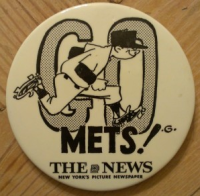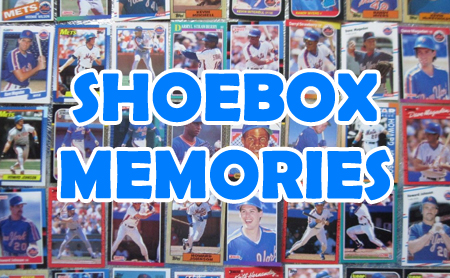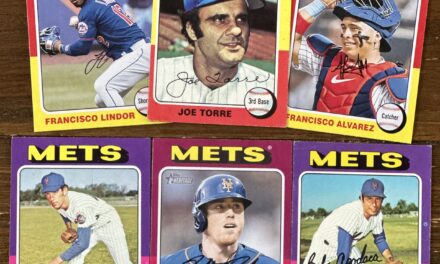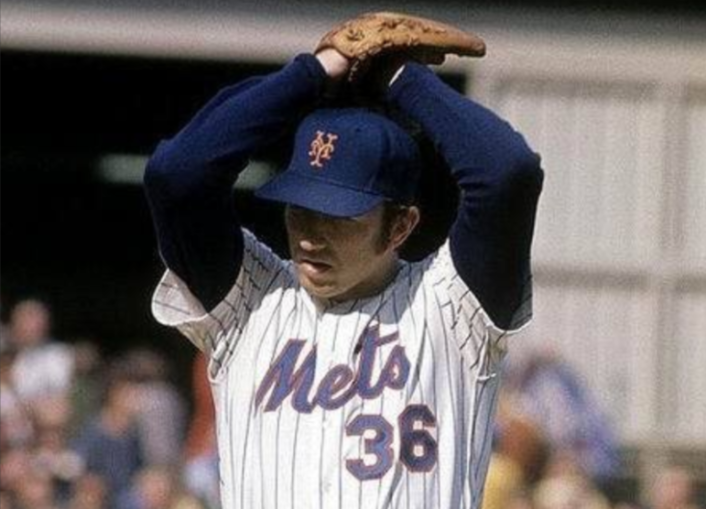
So you want to pitch in Major League Baseball? Let’s see if you have what “it” takes. Don’t have a ball? No problem, none needed. Can’t go outside because of a pandemic? No problem, just stand up and we’ll see if you have the arm elasticity to make it as a professional right in the comfort of your own house.
Start by taking a look at the card below, which is number 655 from the 1979 Topps set and pictures Mets lefty Jerry Koosman pitching at Shea Stadium.

Let’s not worry about stretching your weaker leg forward and crunching down so that you belt is well below the top of your leg. Let’s focus on your throwing arm and see if, while the elbow remains above the level of your shoulder, you can externally rotate your shoulder anywhere close to the 175 degrees shown in this picture.
Those who cannot stretch like that can sit down, you don’t have to worry about pitching in a professional game anytime soon, even after the pandemic is over. Those who are able to stretch like that are almost done. Now, all you have to do is supinate your wrist so that the ball is hidden behind your head and your wrist is ready to deliver the spin for a curveball. At this point, everybody should be sitting, and those standing just have to worry about reaching and repeating this motion a few hundred times every five days. Note the strain seen in Koosman’s left arm, as a bulging muscle from his elbow to half way to his wrist, is clearly visible.
The subject of the card, Jerry Koosman was scheduled to have his number 36, featured so prominently on the card shown, retired by the Mets this coming June 13. While we can only hope the game will be played, and fans will be allowed in the park, we can take this time to recall Koosman’s career with the Mets.
Signed by the Mets as an amateur free agent in 1964, Koosman reached the show in 1967, was runner-up Rookie of the Year in 1968 to Johnny Bench, and was an All Star in both 1968 and 1969. Often Robin to Seaver’s Batman, Jerry Koosman is still the Met’s all-time leader in wins by a lefty, with 140 wins for the Amazin’s.
His lifetime ERA with the team was 3.09, the sixth best all-time, ahead of several Met hurlers who are better known by younger fans such as John Franco, Dwight Gooden, Bobby Ojeda, David Cone, Al Leiter, and Noah Syndergaard.
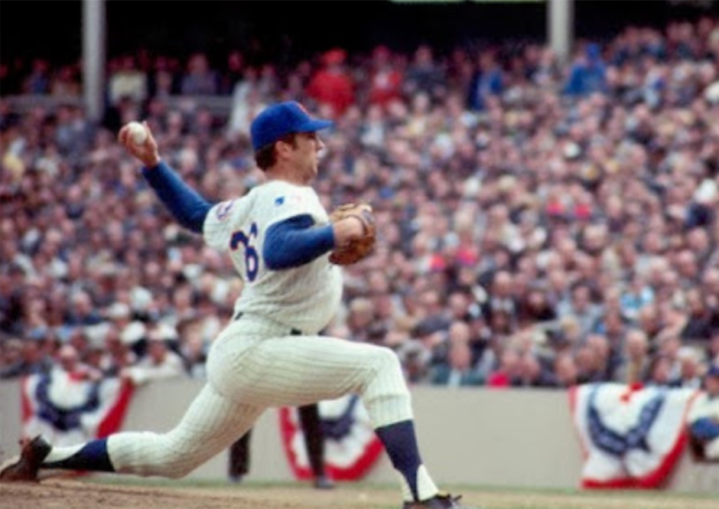
Koosman’s name remains littered around the Mets’ all-time pitching leader board, both good and bad. He is third in career wins with the Mets, third in pitching WAR, and second in game starts, complete games, shutouts, and innings pitched. Koosman also has the most losses in Mets history, and is second in hits allowed, home runs surrendered, walks, and wild pitches.
Koosman was at his best in the biggest moments however, going 9-3 after August 1st of 1969, and 6-4 after August 1st of 1973 with an ERA of 1.99. Koosman was undefeated in postseason play in his entire career. In 1969, Koosman started Game 2 against the Braves featuring Hank Aaron and Orlando Cepeda, and the Mets won. Koosman started and beat Baltimore, featuring Frank and Brooks Robinson along with Paul Blair and Davey Johnson, twice in the World Series, including the series-clinching Game 5. In 1973, Koosman beat the Pete Rose-led Reds in the playoffs and the A’s (Game 5) in the World Series.
By the time fans were holding the card featured here, Koosman had just finished two years with the Mets that likely cost him a number of Hall of Fame votes. In between winning 21 games in 1976 and 20 wins with the Twins in 1979, Koosman’s combined record in 1977 and 1978 for the Mets was 11-35, despite a combined ERA of 3.62, and leading the Senior Circuit in strikeouts per nine in 1977, fanning 7.6.
The Mets during those two seasons won a total off 130 games, averaging 97 losses. Reversing the figures during those two seasons, would augment his existing 222-209 career record to a level that would certainly have earned him more than the four votes he was awarded in 1991, his sole year on the ballot.
Koosman’s time with the Mets ended on December 8, 1978 when he was traded to the Twins for Greg Field and a player to be named later. Field was a 21-year-old pitcher who had reached AAA. Field never reached the majors. However, the player to be named turned out to be Jesse Orosco who, seven years after this card was made, threw his glove up in the air standing on the same mound pictured in this card, as the Mets had become World Series Champions.
LGM
